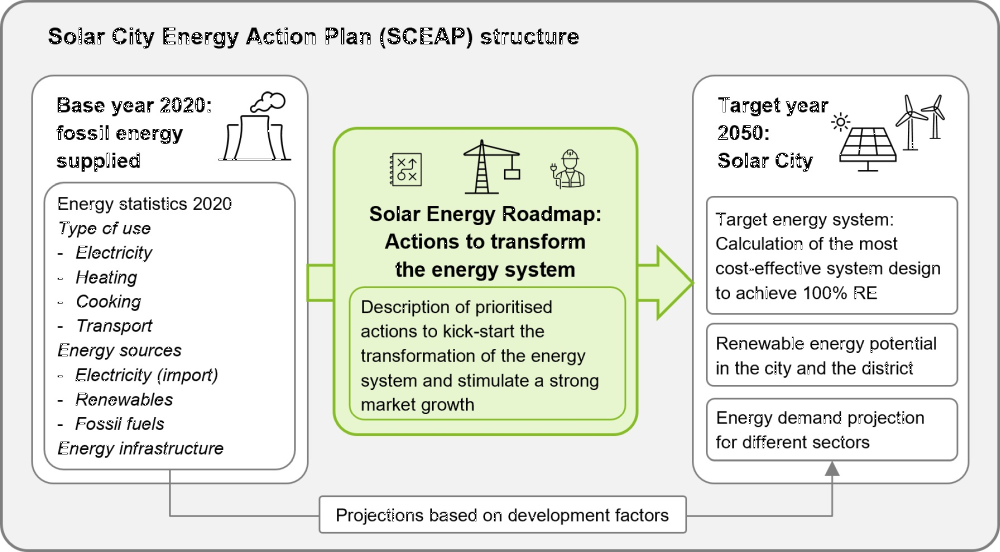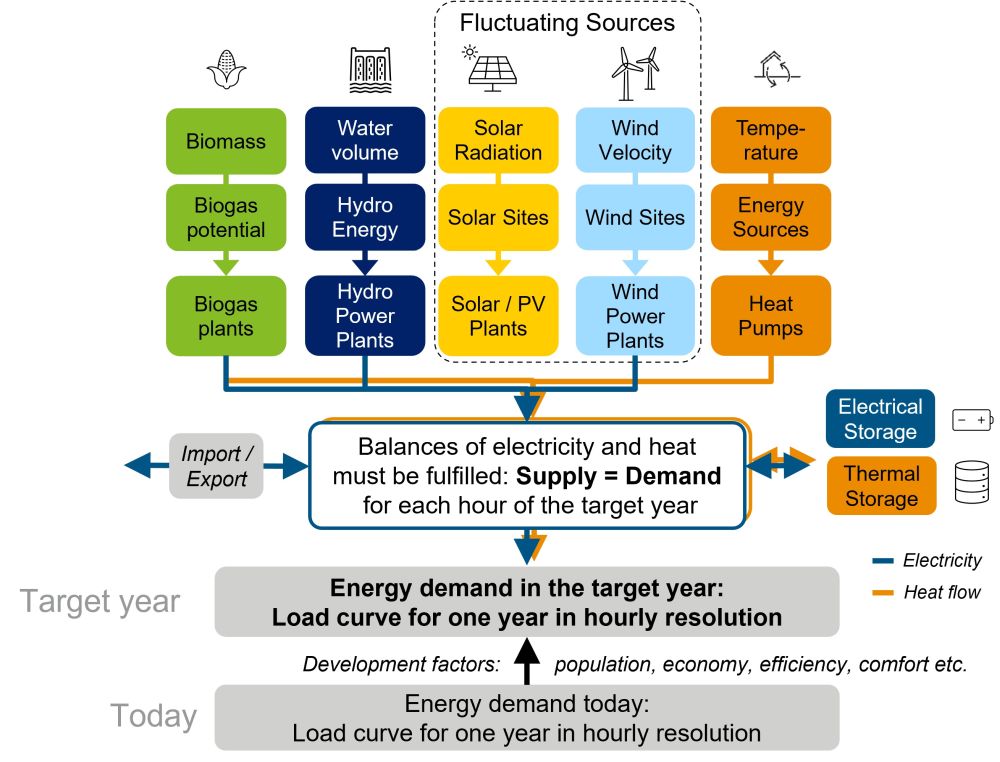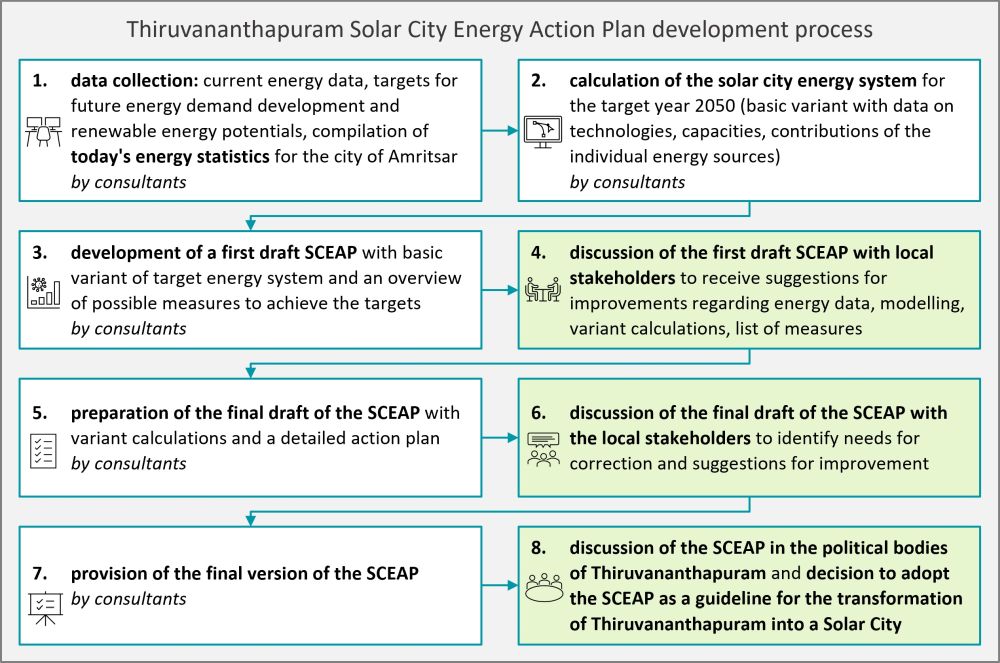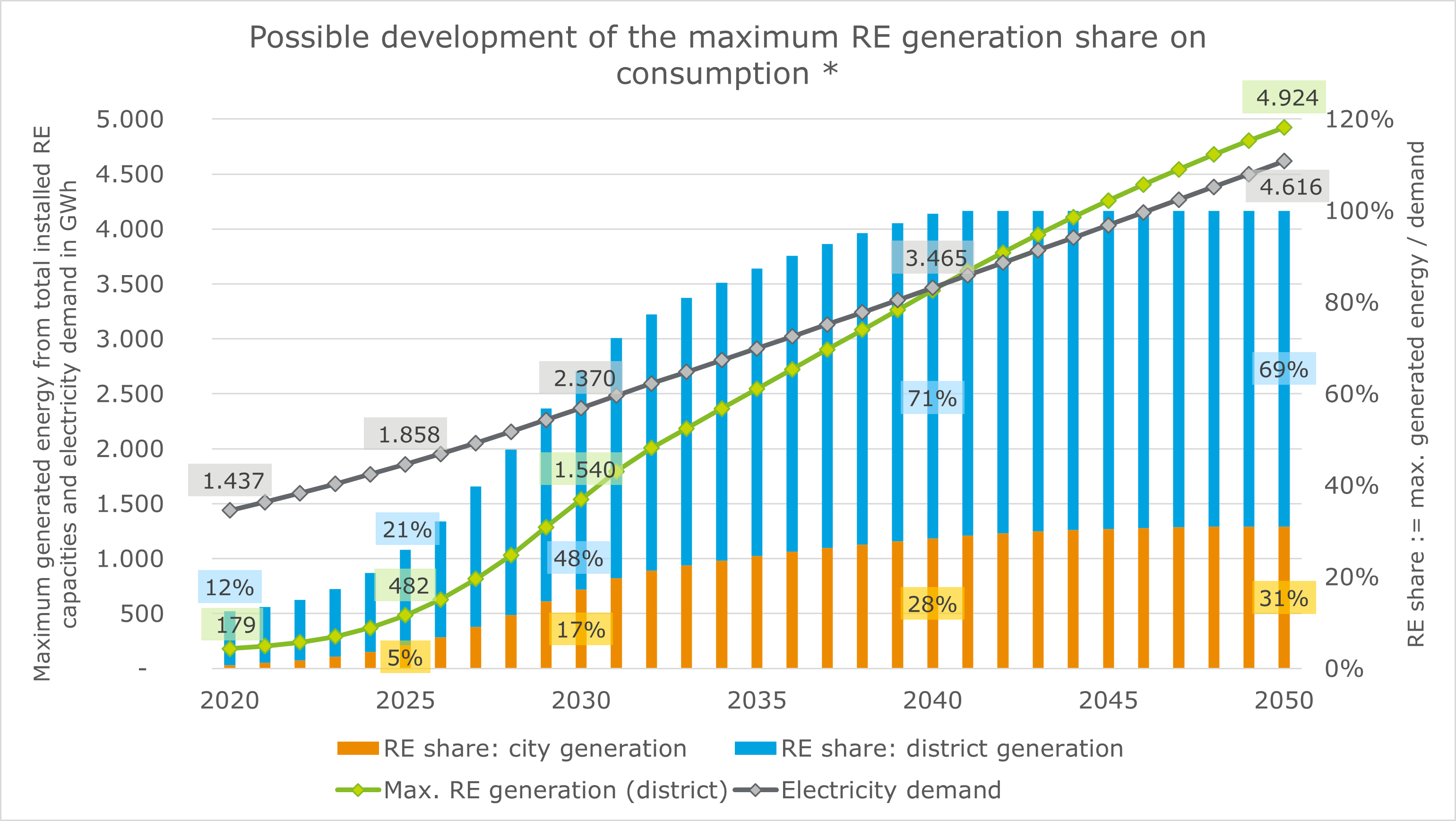| Duration: | 01/2021 - 12/2023 |
| Contracting Authority/ Sponsors: | Deutsche Gesellschaft für Internationale Zusammenarbeit (GIZ) GmbH |
| Project Partners: | Deloitte Touche Tohmatsu India LLP |
| Project Focus: | |
Solar Cities India – Transforming Selected Cities to 100% Renewable Energy Cities



India has set itself the goal of implementing at least one solar city in every federal state. To be declared as a ‘Solar City’ the generation on of electricity from various renewable resources in the city should be equal to or more than the power needs of the city. As this is an ambitious goal, the "Deutsche Gesellschaft für Internationale Zusammenarbeit" (GIZ) is supporting several Indian cities on their way to becoming solar cities. In the Solar Cities India project, the cities of Amritsar (Punjab), Ayodhya (Uttar Pradesh), Gandhinagar (Gujarat) and Thiruvananthapuram (Kerala) were supported by GIZ through the development of Solar City Energy Action Plans, which were prepared by Deloitte Touche Tohmatsu India LLP together with the Fraunhofer Institute for Solar Energy Systems ISE.
The Solar City Energy Action Plan (SCEAP) includes an energy concept for the city and a roadmap with a list of measures to achieve the Solar City goal. The studies of the four cities examine the achievement of this goal by 2050, showing what renewable energy and storage capacities need to be installed to secure the supply, to what extent the city can supply itself with solar energy and how much renewable energy could be imported from the surrounding area. As part of the action plan, short and long-term actions are proposed in the form of the Renewable Energy Roadmap, which will lead to the transformation to a solar city.
The creation of the energy concept included comprehensive modeling and calculations of various technology scenarios and import scenarios. In this context, the potential of different energy sources was examined, including rooftop PV, ground-mounted PV, wind power and hydropower. It became clear that the potential within the cities is not sufficient to guarantee a self-sufficient energy supply. To achieve this goal, it is essential to use the potential in the surrounding area. The cities can supply around 30 - 50% of their own energy via rooftop PV systems.
The main sources of renewable energy in the surrounding areas are typically primarily photovoltaics and biomass, with only two of the cities having potential for wind and hydropower. However, there is also strong competition for land in the surrounding areas at the locations under consideration, which makes the implementation of renewable energy plants more difficult. In this context, agri-PV, the combination of agricultural use and photovoltaics, could play a decisive role in making efficient use of the limited land available. In view of limited biomass potential, implementation in most cities also requires the use of large electricity storage systems to compensate for fluctuations in energy generation.

The self-sufficiency of cities with 100% renewable energy is undoubtedly an ambitious goal. To achieve this goal, various measures have been proposed in a roadmap to promote the expansion of renewable energy installations, including targeted subsidy programs and other incentives to encourage investment in clean energy technologies. In all scenarios, the focus is on the expansion of rooftop PV systems, as the aim is to maximize self-sufficiency and these can be easily integrated into urban environments. With these strategic approaches and planned measures, there is confidence that significant progress can be made towards a sustainable and renewable energy supply for cities.